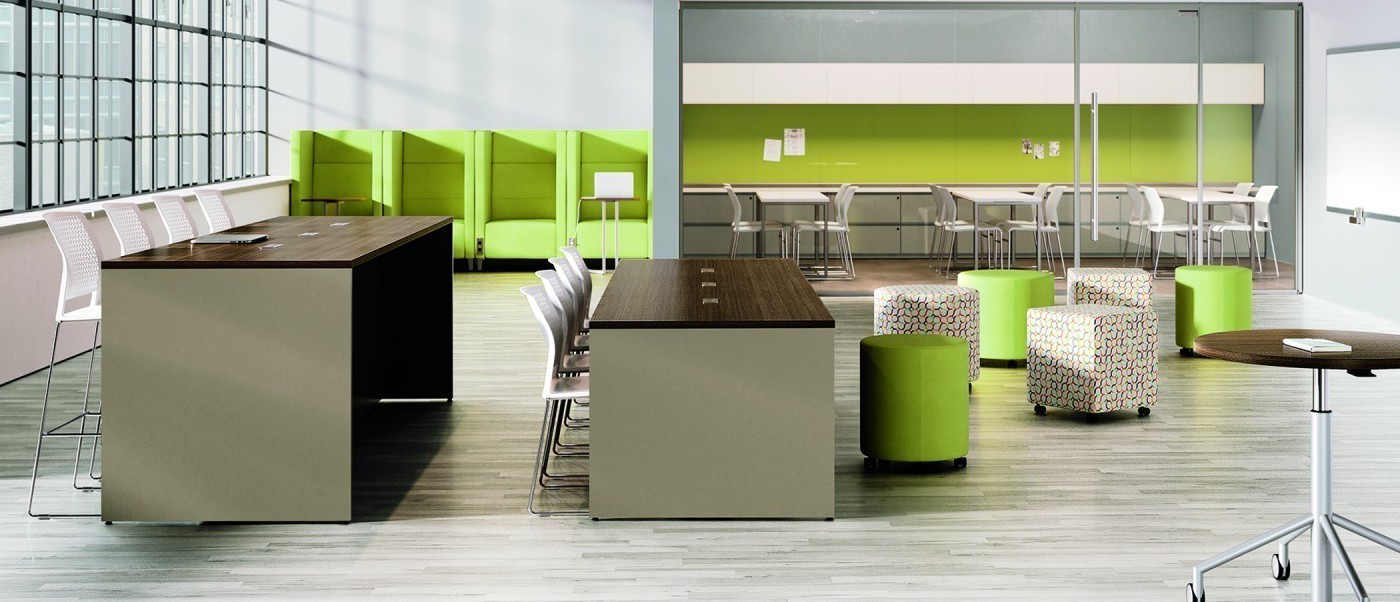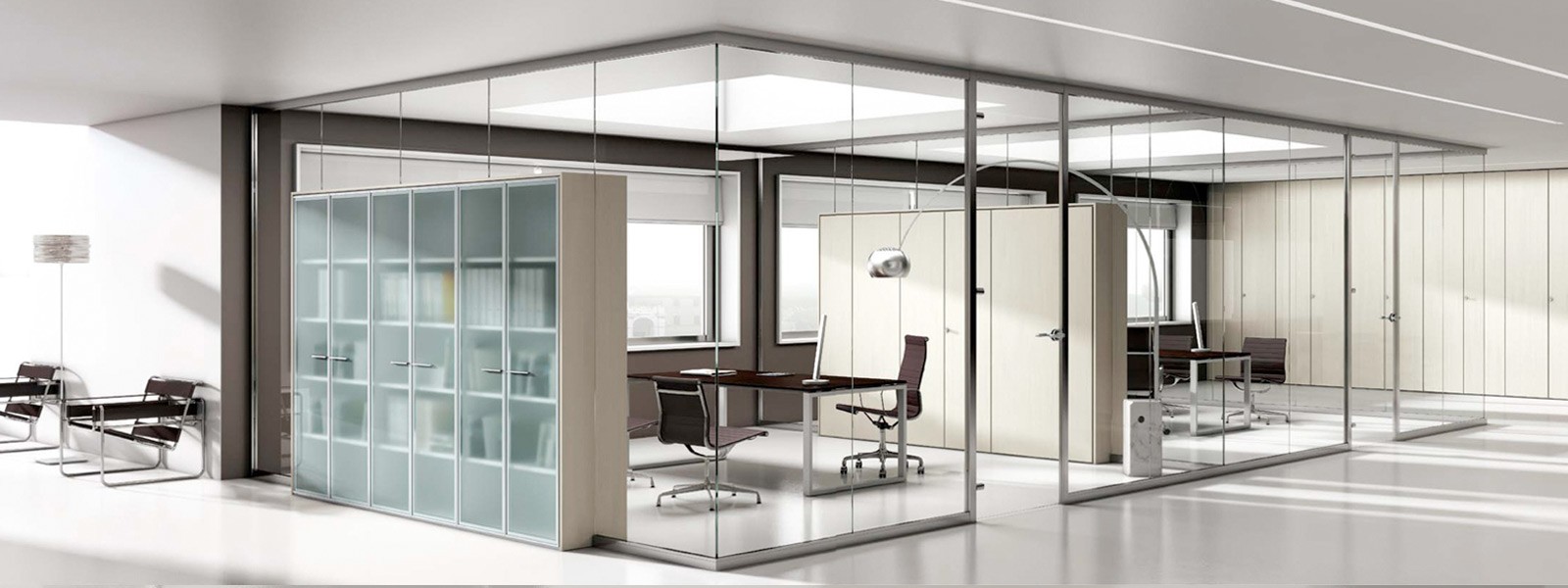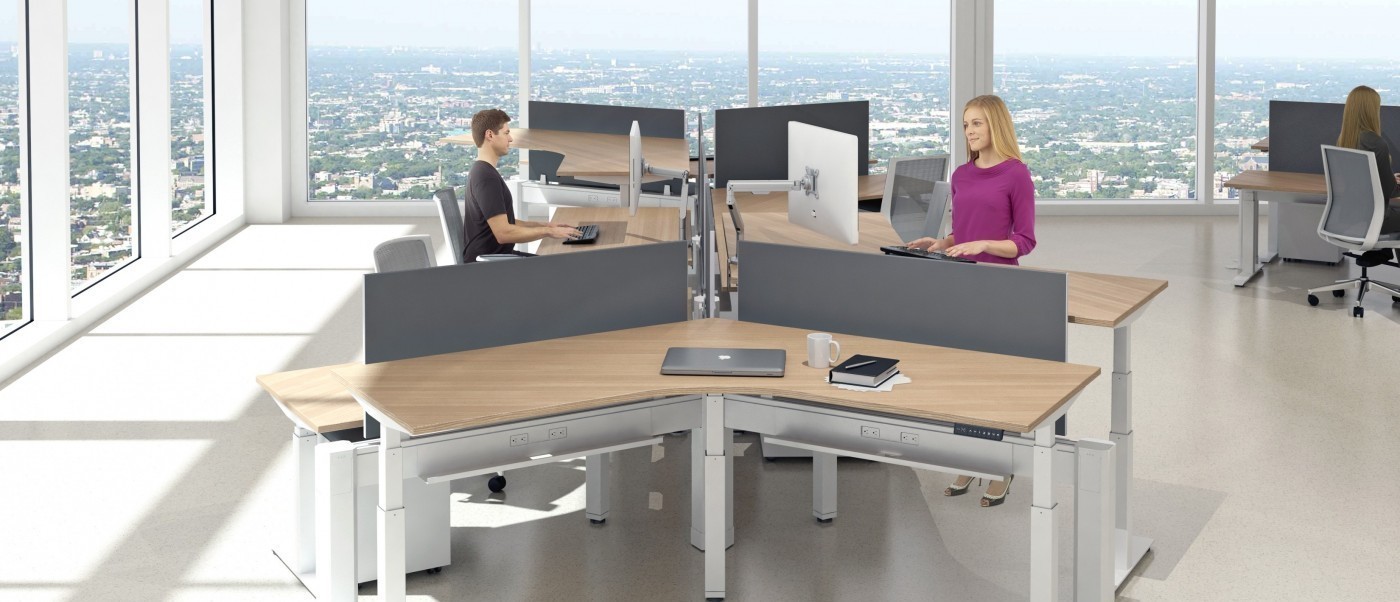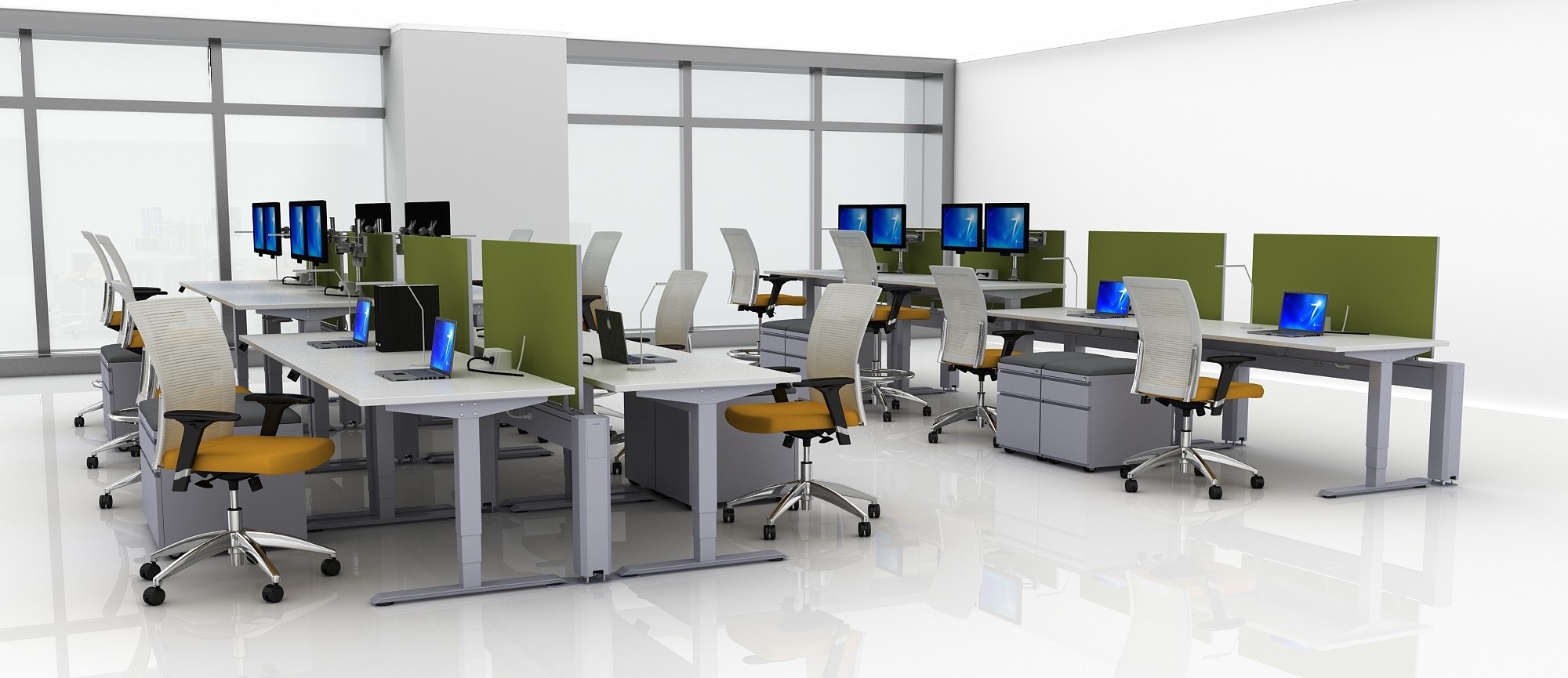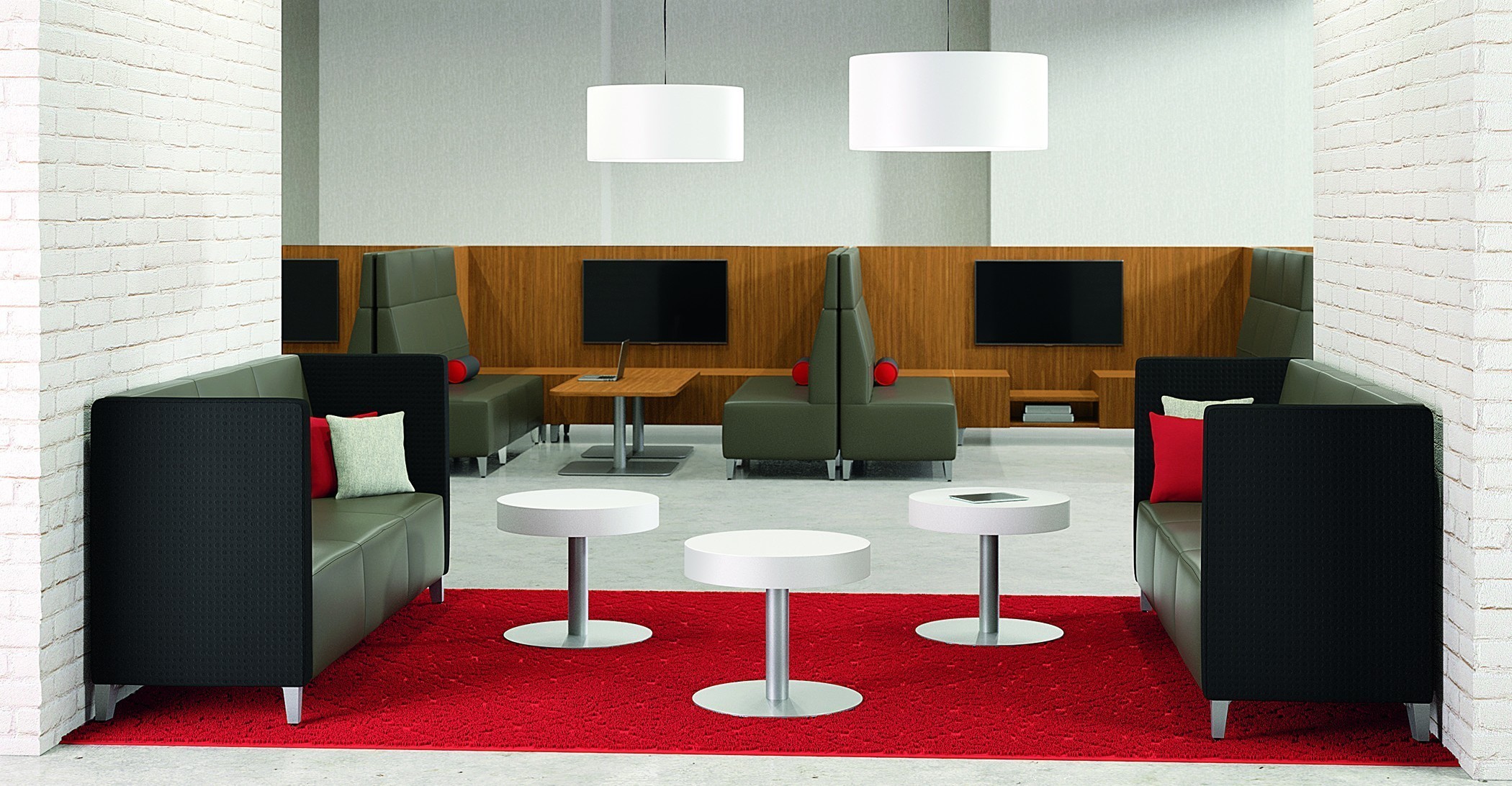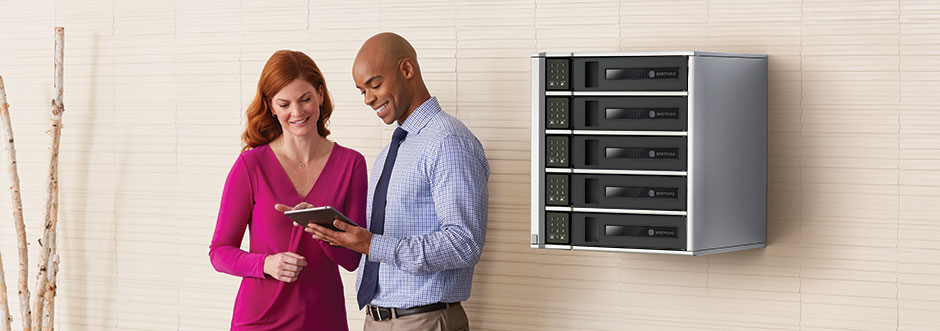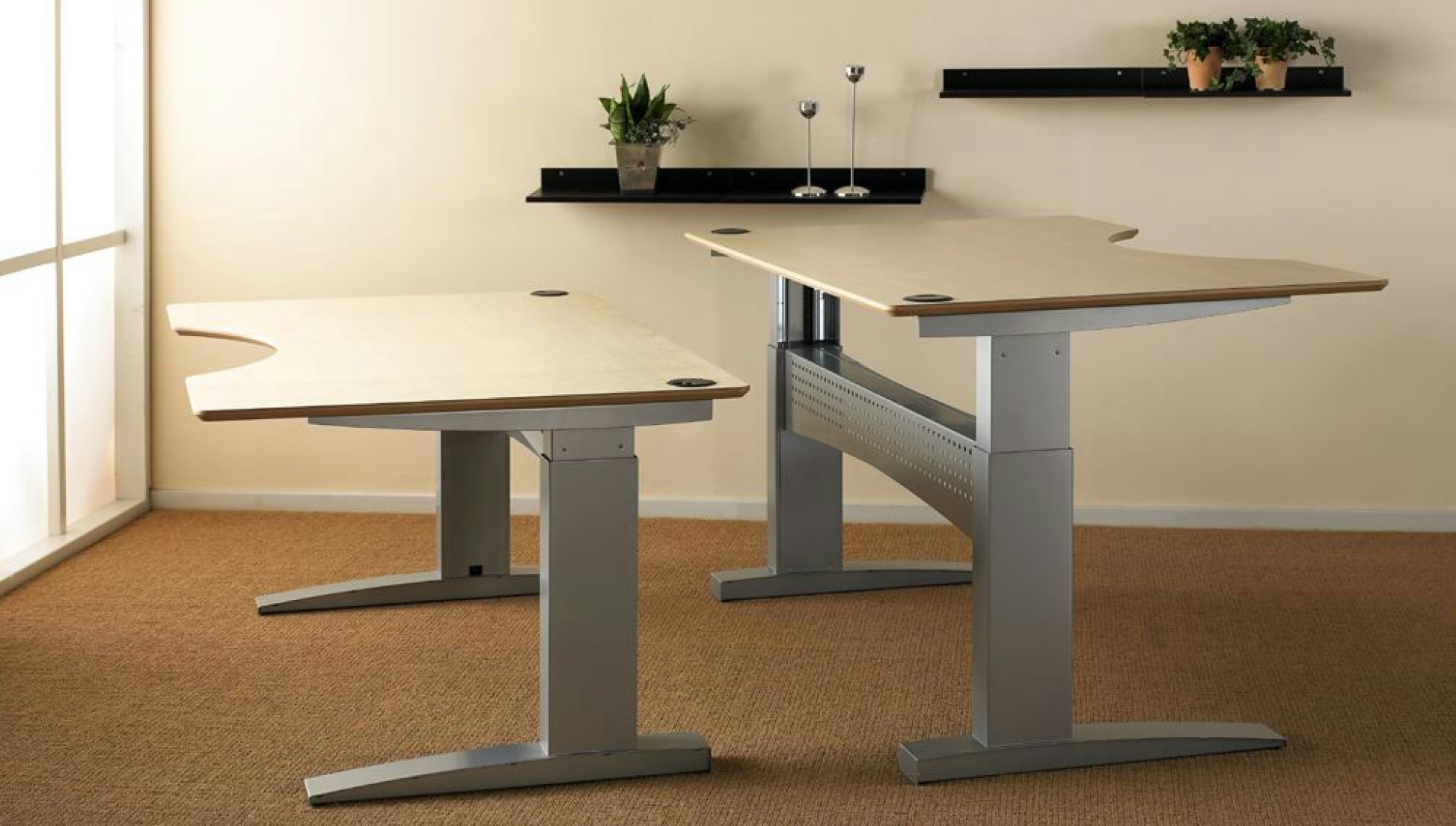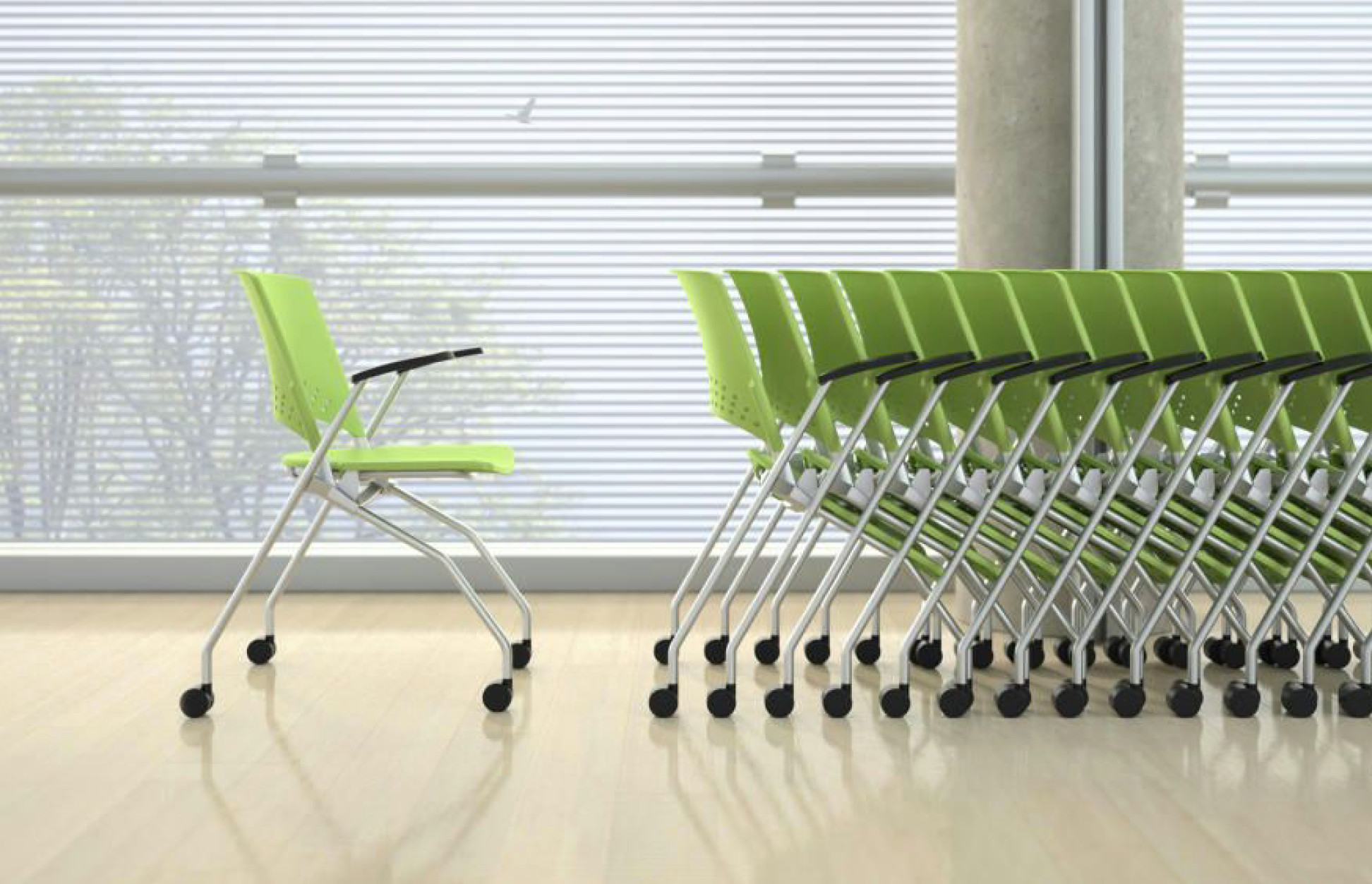Community Tables
The collaborative workspace is not a new trend, but it is an increasingly popular one. Integral to the collaborative work environment are shared spaces where employees can gather, share ideas, and create work together. Community tables are becoming a fixture in any collaborative office design.
In many organizations, work culture has changed such that an employee's place is not static in the workplace; rather, they can work wherever makes the most sense for the project at hand. Community tables provide shared spaces that create that sense of fluidity around the workplace.
We've seen such a communal atmosphere in coffee shops, restaurants, hotel lobbies, and other spaces where individuals or groups can stake a claim for the task at hand. Even when working on one's own, communal areas can help spark creativity and inspiration, as author Susan Cain describes in her insightful book Quiet: The Power of Introverts In a World That Can't Stop Talking.
Check out some gorgeous community tables from Davis and contact our design team for more ideas and inspiration!
Movable Office Walls
Modular office furniture has become an essential component of today’s more collaborative, open workplace designs. The ability to reconfigure and re-design furniture layouts allows for more fluid environments that can support both a team-oriented setting and more private, focused-work areas. Modular office designs and movable office walls also provide flexibility to accommodate new technologies and changing work styles.
Movable office walls (also referred to as architectural walls, manufactured wall systems, and modular walls) have become increasingly popular in offices seeking to embrace a more fluid, future-oriented space. According to Jones Lang LaSalle, although modular office walls can be initially more costly than traditional wall construction, the ability to move and re-purpose walls can provide savings over the long term.
Moveable walls also provide an environmentally-friendly alternative to traditional construction. The walls require less material and incur less waste, and their use of glass allows for more natural light in the workplace. Customers with LEED objectives find many benefits in replacing traditional walls with modular office design solutions.
Environments offers several architectural wall systems, including the Stylwall System from BRC. Please contact us to learn more about our modular office systems offerings or to schedule a design consultation.
Millennials & the Workplace
The many cranes scattered across Denver’s skyline give visual evidence to the growth in the downtown real estate market. Denver has become a very attractive city for businesses to locate (and relocate), and developers are building space to accommodate the demand. Certainly the revitalization of Union Station has become a hub for much of the building and renovation of older buildings. The lower downtown areas of RiNo, LoHi and LoDo are the focus areas for much of this growth.
Technology companies, a growing sector of Colorado’s economy, have large numbers of young knowledge workers. The Millennial Generation (also known as Generation Y), with birth years ranging from the early 1980s to the early 2000s, are the lifeblood of these tech companies. This workforce trend will only increase; it is estimated that by 2020, 86 million Millennials will be in the national workforce, representing 40% of the total workforce population. The explosion of the Millennial workforce has fueled the boom in companies looking for urban business locations. Millennials want to work where they live, and with so many in this group choosing to live in downtown housing, it follows that they want to work downtown as well.
The type of spaces that appeal to this young workforce has significant impact on both real estate professionals and developers, as well as on the professionals that design their spaces. The trend of revitalizing old loft spaces started years ago and shows no sign of slowing down. Millennials want FUNKY. “Brick and Timber” spaces are commanding premium lease rates, but in the race to attract and retain the best talent entering the workforce, many companies are biting the bullet.
When weighing the higher rent in areas of lower downtown Denver, some companies are looking for alternatives to the high costs there. Some companies are looking to take newer building spaces and give them a rawer, “funkified” look and feel. Design professionals are then challenged with taking a different approach to create spaces that have a raw, urban feel. Open ceilings, stained concrete floors, coffee bars, and bike racks are replacing more traditional interior looks.
Amenities for Millennials does not necessarily mean the same as it did only a few years ago. Amenities in the past have been focused largely on niceties contained in the building itself. While these amenities are still valuable, the urban Millennial workforce considers surrounding amenities as much as those inside their own building. Gyms, coffee houses, restaurants, and other gathering places that are close to where Gen Y’ers work are often more important than those inside their building. “Location, location, location” is certainly a key mantra for companies looking to attract the best young talent.
Interior spaces for companies that value collaborative work look very different from the old, traditional private offices + cubicles + conference rooms model. Individual spaces have shrunk in favor of reallocating space for more communal work spaces, where casual interaction can occur. Progressive companies are looking for spaces to be more utilitarian and more versatile in function. Formal conference rooms have given way to spaces that encourage smaller, informal, serendipitous meetings where ideas can be shared without dedicating a room to a meeting. Fewer walls and more open space is what millennials want, and this type of environment supports their collaborative way of working. The emphasis is less on “I” and more on “we”, and spaces have to reflect this paradigm shift.
Where and how tenant improvement dollars are spent to support a Millennial-friendly workspace have shifted. The younger work force puts less value on a beautiful space and more on an urban space reflective of what they value and what interests them. Millennials represent the new generation of workers that will have profound impact on the futures of companies; where, and how, they want to work will continue to shape the landscape of Denver’s downtown market.
All this buzz about the Millennials begs the question of what happens once this generation matures and ages into their 30’s and 40’s? Generation “Z” is right behind them!
Height Adjustable Office Furniture
Health experts agree that spending most of your day sitting in a chair can increase the risk of obesity, diabetes, cardiovascular disease and cancer. This article from Smithsonian explains all the risks associated with sitting.
Sit-to-stand office furniture is now considered a necessity in the workplace. Office furniture manufactures have responded to the health risks by introducing a wide variety of height-adjustable options. But which one is right for you?
AMQ Solutions offers two unique selections worth considering. The ACTIV1 and the ACTIVPro both have a number of features that make the sit-to-stand process more convenient and considerably more quiet.
The AMQ ACTIV series brings movement and flexibility to the workplace with smart aesthetics, quiet motors, and LED control screens that include memory preset features. All of this comes with a price point that will satisfy a variety of different budgets.
The primary selling point for the ACTIVPro is the whisper quiet motor, which makes height adjustments nearly unnoticeable. Other perks of the Pro include a few extra inches in height range, four memory presets instead of three, a full platinum finish, increased weight capacity and a push button control panel. Both styles have a lead time of only 5 days.
To compare all the features of both the ACTIV1 and the ACTIVPro, download the AMQ ACTIV Series comparison guide.
When it comes to sit-to-stand office furniture, you’re no longer stuck with clunky and poorly designed selections. AMQ has given the design and functionality of their new ACTIV Series height adjustable desks considerable through, and it shows.
If you’re interested in testdriving the AMQ ACTIV Series or other height-adjustable office furniture options, please contact us to schedule an Environments Denver showroom tour.
Office Furniture Predictions
Next year, more than 3.6 million baby boomers are set to retire and more than one fourth of millennial workers will become managers. Statistics like these and other trends continue to shape office furniture design and the way we work in 2016. Here are our predictions for the office of the future.
The remote workforce will continue to grow
In a recent study by Forbes, 64% of office managers expect their employees to be reachable outside of the office on their personal time. This further indicates a workforce that is more mobile than ever. According to Jones Lang LaSalle, the average employee footprint is expected to shrink to 150 square feet by 2020. Many of those employees aren’t even using their assigned spaces. Work will be performed in many different locations. Office furniture of the future will need to adapt to a variety of different situations. Expect to see more benching applications and both public and private enclaves, all wired for modern tech.
Office furniture and social media merge
It wasn’t too long ago that companies locked down Facebook, Twitter and YouTube from employees. In 2016, businesses will be creating social media policies that encourage employees to promote the organization on social networking sites. With this in mind, office furniture will become even more tech friendly. Social spaces will be designed to enhance the social media experience by including video and other technology that assists social behavior.
Employee health will be a big factor
Sit to stand office desks took off in 2015, and for good reason – a healthy employee is a happier, more productive employee. In 2016 we will continue the trend by providing additional health benefits to employees. Expect to see integrated exercise rooms, gym memberships, personal trainers and an emphasis on ergonomic office furniture all designed to keep the workforce as healthy and happy as possible.
Office design will be increasingly important to attract and retain talent
Workplace design can greatly influence a potential employee’s decision to take the job. There will need to be a wide variety of office furniture that adapts to different workstyles. Some people prefer cubicles and others prefer open plan. As more employees working remotely, office furniture needs to facilitate a mobile workforce as well. Color, style, ergonomics and culture will be critical to attracting and retaining top talent.
Generation Z will enter the workforce in 2016
Born between 1994 and 2010, Generation Z will be entering the workforce as soon as May, 2016. Generation Z is an entrepreneurial bunch and will expect many of the same amenities in the office as Millennials do. They are expected to be a little more realistic about careers, and are also frugal spenders as they experienced the burdens of an economic recession through their parents. Tech will be even more important in the office, as will adaptive social spaces. Unlike Millennials, a recent study by Millennial Branding revealed 53% percent of Generation Z prefer in-person
communication over tools like instant messaging and video conferencing.
One thing we know for sure is that the office of the future will continue to undergo dramatic change in the years to come. To prepare your workplace for the future, consult the professionals at Environments Denver for design advice and and products designed to meet the needs of a modern workforce.
Office Furniture is Getting Device-Friendly
Device-friendly office furniture is no longer a trend.
It happened slowly at first. Before we knew it, the CRT monitor was gone. Long live the flat screen revolution!
Changes in technology are now happening more rapidly than ever. The death of the CRT monitor was the last trackable milestone of a bygone
era.
Advances in technology have ushered in not only a change in the way we interact with the world, but also a change in how we work. Technology has given us our desk space back. CRT monitors took up an enormous amount of room. LCD monitors have liberated much of our work surface. Desks no longer have to be so deep. When you introduce flat screen monitor arms, the only thing on our desk these days is a keyboard and a mouse.
Technology didn’t just free up our work surface. It also offered us more office space to work with. Now the workplace can have plenty of room for foosball tables, trampolines and napping pods. Have you seen the inside of a Google office?
Our mobile devices are literally changing the office landscape. Commercial furniture manufactures such as National Office Furniture, Global, HON and Allermuir are all introducing products that seamlessly integrate power, data and our socially connected world. Here are some examples of tech friendly office furniture:
- The Brentford TechGuard Charging Locker provides locking storage and charging for individual laptops, tablets and phones.
- The AirCharge from ElectriCable Assemblies solution enables users to power and charge their devices without the hassle of messy cords or cables.
- Mio Collaborative Tables from National makes meetings flow by incorporating technology with grommets and projection options that allow individuals to share their device desktops with a click of a button.
Technology has not only changed how we work, but also where we work. More and more employers are beginning to embrace the notion of a mobile workforce. Work permitting, we can now dial in from the home office or a coffee shop. Communicating with the mother ship is still as important as ever. Conference rooms must now meet new demands. Video presentation walls, power and data ports and integrated voice technology is now required for meeting spaces.
Today’s business owners and office managers have a unique challenge ahead of them. How do they adapt and keep pace with emerging technology? How do they give employees the tools and resources they need to stay connected yet mobile? Environments Denver is a great resource for answers to these questions. Be sure to contact us for an in-person look at how today’s modern office furniture is helping us integrate technology.
Why Sit-Stand Desks Should Be in Every Office
“A sedentary life may be injurious,” the Presbyterian minister Job Orton advised in 1797. He went on to say, “It must therefore be your resolute care to keep your body as upright as possible when you read and write; never stoop your head nor bend your breast. To prevent this, you should get a standing desk.”
Even in 1797, ergonomics were important to the office worker, and it seems Job Orton knew what he was talking about. There is much evidence to suggest sit-stand desks are a sound investment. The health benefits are innumerable and backed by many recent scientific studies.
The CDC has found that standing desks (or “sit-stand” desks) reduce upper-back and neck pain, and improve the overall mood of its users. At Smithsonian.com, Joseph Stromberg reported that standing desks reduce the risk of obesity and type-2 diabetes. And a 2012 Australian study found that prolonged sitting increases the risk of death.
Sit-to-stand desks look very similar to standard open-plan desks; that's about where the similarities end. Each desk is outfitted with a manual or electronic mechanism that raises and lowers the desk. It is very easy to use and can be positioned within seconds. If sit-stand desks for every employee is cost-prohibitive, it is recommended that offices have several desks stationed throughout the space for employees to use throughout the day. If mood, productivity and overall health improve after a period of using sit to stand desks, it may make economical sense to install additional sit-stand desks in the workplace.
We can all agree there are benefits to walking. If weather or time prevent a daily walk outside of the office, sit to stand desks provide very similar benefits. Since many of us spend eight or more hours a day at the office, it makes sense to incorporate healthy habits into the work routine.
Environments has many solutions for sit-stand desking. Please contact one of our furniture specialists for additional details and to test-drive some sit-stand options.
Why Nested Seating is Critical for Small (And Large) Offices
Let’s face it: real estate is expensive. If you own or lease office space in Denver or another major metropolitan area, you know real estate can be a sizable investment.
If maximizing real estate and getting the most out of your space are high priorities, nested seating can make a solid addition to your office furniture mix. Whether you have frequent team meetings, training and conference activities, or are simply short on storage space, nested seating is a necessity for large and small office spaces alike.
The key feature of nested seating is chairs fold easily and store with very little fuss. They take up less space and can be easily deployed for quick meetings.
This year at NeoCon, the world’s largest commercial furniture trade show, AllSeating introduced a handsome nested seating option called MultiNester. It has received high marks and accolades this year, and we’re excited to work with the product. Of course, we offer many other nested seating options at Environments; be sure to contact us for a chance to explore ways to maximize precious real estate.
